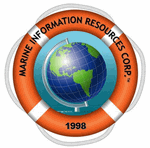Start Date
7-12-2017 10:00 AM
End Date
7-12-2017 10:45 AM
Description
Expeditionary forces from many countries have deployed to mitigate the effects of natural disasters and human conflicts. Approaches are usually linked to the nation’s maritime strategy. Expeditionary forces provide rapid response to man-made disruptions such as mass casualties by terrorists, vessel hijackings by pirates, murders by drug cartels, and nuclear accidents. Recent examples include Humanitarian Assistance/Disaster Response (HA/DR) and Non Combatant Evacuation Operations (NEO). HA/DR type missions have been planned and executed to mitigate the effects of catastrophic tropical cyclones, flooding, wild fires, and tsunami. NEO missions are focused on the evacuation of a nation’s citizens and other foreigners from threatened areas abroad. The need for robust capabilities in this area in both expeditionary warfare and disaster recovery are required so that governments can perform their civil functions. This type of crisis response requires expeditionary forces to be self-sustaining and make data-driven decisions in austere and chaotic environments. Technology solutions have been developed to identify, study and resolve expeditionary warfare and force protection challenges, especially along dynamic coasts that are modified by waves, tides, and shallow water processes. This paper will highlight the impact of waves, tides, and shallow water processes. There are many other environmental factors that are required to support expeditionary warfare.
Abstract - Contemporary Expeditionary Warfare for Scientists and Engineers
Included in
Session 1 Paper - Contemporary Expeditionary Warfare for Scientists and Engineers
Expeditionary forces from many countries have deployed to mitigate the effects of natural disasters and human conflicts. Approaches are usually linked to the nation’s maritime strategy. Expeditionary forces provide rapid response to man-made disruptions such as mass casualties by terrorists, vessel hijackings by pirates, murders by drug cartels, and nuclear accidents. Recent examples include Humanitarian Assistance/Disaster Response (HA/DR) and Non Combatant Evacuation Operations (NEO). HA/DR type missions have been planned and executed to mitigate the effects of catastrophic tropical cyclones, flooding, wild fires, and tsunami. NEO missions are focused on the evacuation of a nation’s citizens and other foreigners from threatened areas abroad. The need for robust capabilities in this area in both expeditionary warfare and disaster recovery are required so that governments can perform their civil functions. This type of crisis response requires expeditionary forces to be self-sustaining and make data-driven decisions in austere and chaotic environments. Technology solutions have been developed to identify, study and resolve expeditionary warfare and force protection challenges, especially along dynamic coasts that are modified by waves, tides, and shallow water processes. This paper will highlight the impact of waves, tides, and shallow water processes. There are many other environmental factors that are required to support expeditionary warfare.



